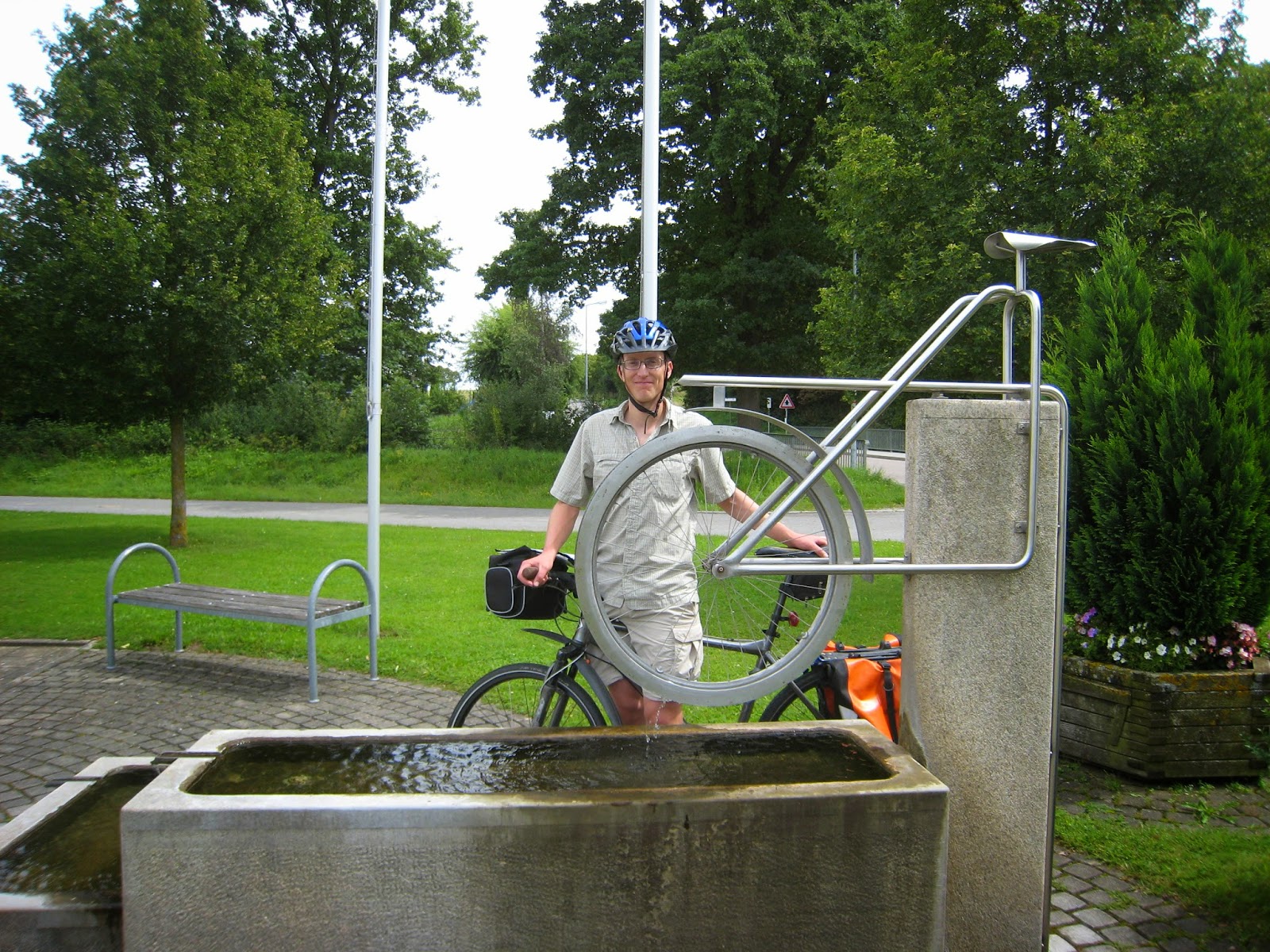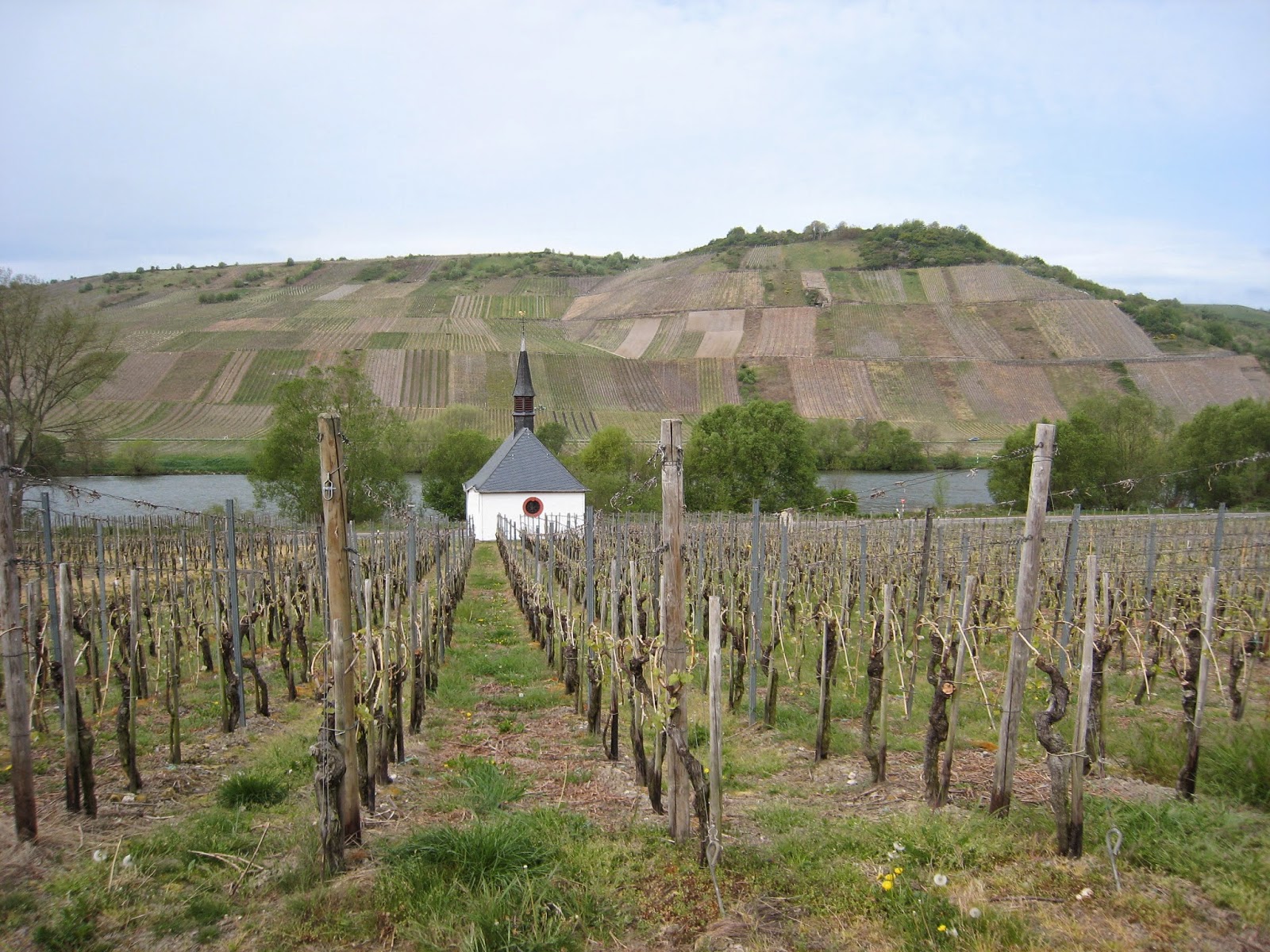The afternoon we arrived we saw the Bundestag, or parliament building. Apparently it is quite nice to go inside, but since we were there on a holiday weekend, there were no reservations available.
The next day was May 1 (May Day), and Mikey and Melissa arrived by train in the morning. We set off to "MyFest", which was a play-on-words of "Mai", the German word for May, pronounced the same way. The streets of one neighborhood were lined with food vendors, who were mostly normal citizens who made a lot of something yummy and came out to sell it. There was a lot of Turkish food, some Indian, and various Asian to supplement the "Wurst" stands. Nevertheless, Mikey and Melissa did take the opportunity to enjoy a Wurst.
May 1 is of course the day where Bavarian children dance around a maypole, but Berlin is famous for its May 1 protests, due to the fact that May 1 is International Workers Day. This day marks the Haymarket riots in Chicago, but the US for whatever reason celebrates Labor Day at the end of the Northern Hemisphere summer. Joe was thrilled about the coincidence of our trip and the protests, so we spent part of the day circumnavigating the protest parade route. I have never seen so many armored police vehicles. Luckily, it was not violent this year, and we stood back from a healthy distance and watched the loud, red river (communists), bounded by a bank of blue police.
From nearly everywhere we went in Berlin we had views of the "Fernsehturm", or TV tower. It was built in East Germany during the 1960's, and is the tallest structure in Germany. On the ball, when the sun is shining, there is a kind of shiny cross, referred to as the "Pope's Revenge" on the state with no religion. We also saw many remnants of the Berlin wall, and Checkpoint Charlie while walking around the city. To contrast this, we ventured into the small kernal remaining of medieval Berlin to find the remnant of the original city wall.
In any major city you can do a hop-on, hop-off bus tour these days, but Berlin has a bonafide bus line that is used for transport by Berlin residents, but has a top deck to accommodate tourists, as its route hits a lot of the major sites. On one gigantic roundabout we hopped off to investigate the victory column. It was built in the 1860's to commemorate Prussian victories and the coalescing of the German Empire. The above picture shows the reliefs flanking the bottom of the column, which were removed by the French in 1945 to lessen Germany's memory of its military success; the relief were returned in 1987, during the 750th anniversary of Berlin. It is interesting to note that only the figures of the monarchy are systematically defaced on the relief, so there might be a connection to German defeat during "The Great War" and the end of the German Monarchy. Nevertheless, the column was only lightly damaged by the WWII bombings that destroyed much of the city. Obama also gave a speech here in 2008.
Of course we eventually wandered back to the Brandenburg Tor (Gate) on our bus tour. By this time we were cold and hungry, so we found a shop selling Currywurst. I tried the East German version of this hot dog with curry flavored ketchup: sans casing, as it was hard to come by behind the iron curtain.
Near the gate we encountered the Jewish memorial, which is a contoured landscape with coffin-dimensioned columns rising to different heights out of the uneven ground. It was easy to get lost within the concrete coffins, and cold spring weather lent to the ominous feeling. But we couldn't deny a sort of whimsy in the memorial, as it was impossible to resist playing hide and seek.
One of the most thought provoking experiences was venturing deep into East Berlin to see the Soviet War memorial, built to honor their dead soldiers and their contribution to ending WWII. Americans love to remember our bold rush to finish the war, but this was enabled by a slow, cold bleed of Germany on the eastern front that took the lives of millions of Russians. Of course a cold war ensued, and the "spoils of war" were enjoyed by victorious Russians at the expense of East Berlin's citizens. But for me it was a good reminder that this history is not as simple as an American GI hero swooping in to save the day.
During our walk to the Soviet Memorial, we found a fish stand selling mackerel sandwiches. This was Joe's culinary highlight, and I made up a little song about it that I still sing to him all of these months later.
































































